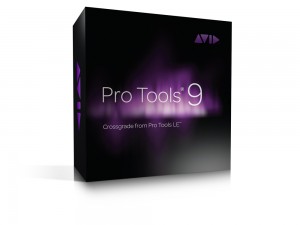Every company that releases a new product wants you to think that it changes the dynamics of the market it competes — few actually do. However, with Pro Tools 9, Avid has literally changed the game.
[ad#Google Adsense 300×250 in story]The pro audio market (the game) has looked the same for years. Pro Tools with its own hardware; Logic and its ability to use third-party hardware; and Cubase, which could also use third-party hardware. I use all three, because I write about them all and need to keep up with what’s going on in the market.
One of the biggest knocks on Pro Tools was that you needed to purchase Avid hardware in order to use the software. Because Pro Tools was the market leader, many musicians and engineers felt they had to use it, just to be in the same market as the studios.
But that feeling has been changing. Many people, due to costs and versatility, have started using other software products, which opened up the market.
Avid took that complaint away with the release of Pro Tools 9. The software will now work with virtually any piece of hardware on the market. That is, hardware that uses Core Audio or ASIO, which is pretty much everything.
We can debate all day which software is better than the next. You can see those debates on every audio forum on the Internet. Features get released in one piece of software, and then they get copied, improved and released on the competitors software.
That’s the way the software business goes.
However, by giving every user the ability to use Pro Tools with their existing hardware, Avid has changed the dynamic of what everyone knew about the audio market.
Avid didn’t stop at freeing up users to utilize whatever hardware they want, they also included many software options that you had to pay to get before. That was the second big knock on Avid and Pro Tools from its users.
 Pro Tools came with basic functionality, but some of its competitors were giving away a great deal of features that Avid charged for.
Pro Tools came with basic functionality, but some of its competitors were giving away a great deal of features that Avid charged for.
For instance, Pro Tools 8 gave you 48 tracks — Pro Tools 9 gives you 96. The AAF/OMF/MXF file interchange was a paid option in Pro Tools 8; it’s included in PT9. MP3 Export, a paid option in PT8; included in PT9. The list goes on and on.
Some skeptics will say that Avid finally learned their lesson, and maybe they did. But making the changes they did with Pro Tools effectively turned the market back around in their favor.
The audio market is going to be very interesting to watch over the next year, but I can’t think of anything else Avid could have done to put itself in the best possible position to come out on top.
